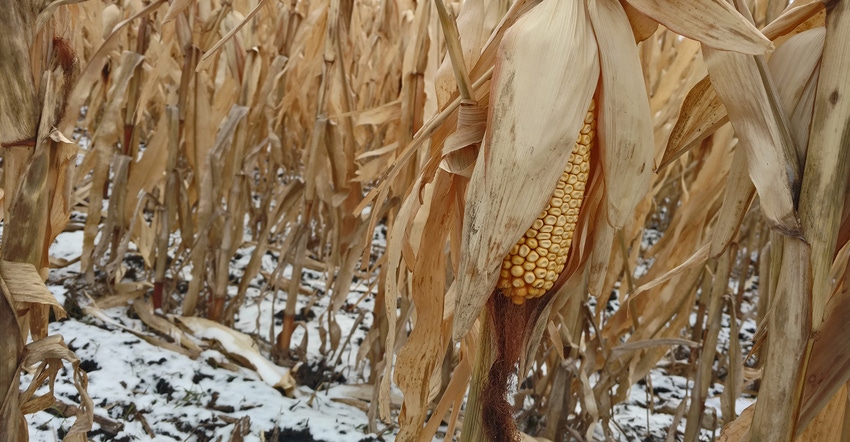December 11, 2019

In North Dakota, corn left standing in the field over winter may dry to about 17% to 20% moisture, according to Ken Hellevang, North Dakota State University Extension agricultural engineer.
Field losses will depend on stalk strength, ear shank attachment to the stalk, winter conditions and wildlife.
Letting corn stand may not be cheaper than drying corn, Hellevang says.
You’ll need to estimate drying costs and compare it to possible field loss.
To estimate propane drying costs per point of moisture removed per bushel, multiply the propane cost per gallon by 0.02. For propane at $1.50 per gallon, the propane cost would be 3 cents per bushel per point of moisture removed. If 10 percentage points of moisture had to be removed, the cost in this example would be 30 cents per bushel.
If the corn price is $3 per bushel, then then 30 cents drying energy cost would be equivalent to a 10% field loss during the winter (30 cents per bushel drying cost divided by $3 per bushel equals 0.10 equals 10%), Hellevang says.
In other words, if you expect that will have more than 10% field losses it may cost more to leave the corn in the field than to harvest the corn and dry it.
Also, leaving corn standing may trap more snow, which will increase soil moisture. If you can’t harvest the corn in February or March, the ability to plant on time in the spring may be affected, Hellevang says.
Source: NDSU, which is solely responsible for the information provided and is wholly owned by the source. Informa Business Media and all its subsidiaries are not responsible for any of the content contained in this information asset.
You May Also Like




